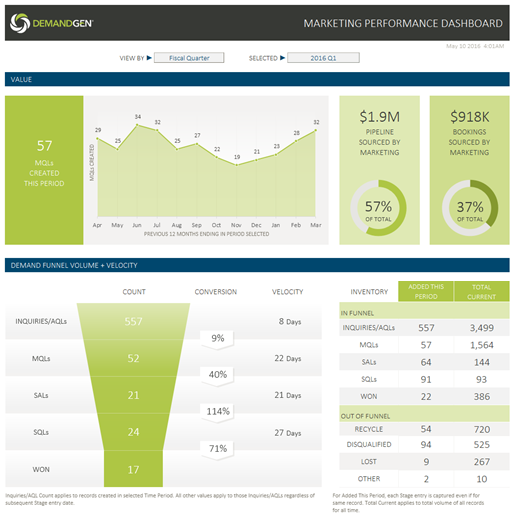
I’ve worked with a number of organizations that were in a rush to get to the end goal as fast as possible. Maybe they learned about the power of lead scoring or saw some killer dashboards at a recent conference, and they wanted to be able to do that yesterday.
And who can blame them?
Some of the necessary steps — such as designing a shared funnel taxonomy between marketing and sales, or creating lead management and campaign reporting frameworks (all of which we can help with!) — can be time-consuming. And they certainly don’t show results right away with a fancy dashboard you can share with the executive team.
Wouldn’t it be great to just skip ahead to the reporting projects?
Don’t get ahead of yourself
So many things need to happen, though, before you reach the finish line:
- Lead nurturing campaigns: Say you want to move from batch-and-blast email to lead nurturing or drip campaigns. You can’t do true lead nurturing, though, unless you have an agreed-upon demand funnel between marketing and sales. That’s why creating a lead management framework is one of first things we always do. When marketing and sales have the same definition of an MQL and an SQL, for instance, handoffs are much smoother as leads progress through funnel.
- Lead scoring model: Your lead scoring model is only as good as the data you put into it. Maybe you’ve just been capturing job titles in a free form field, so you can’t parse your data by job function (e.g., operations vs. marketing) and job level (e.g., director vs. VP). Or, maybe you can’t segment your contacts by industry or based on campaign or website engagement. If your data isn’t in a good state, or you don’t have enough data points to begin with, you won’t be able to accurately score your leads. That’s where a data assessment and data normalization come in.
- Campaign reporting framework: Who doesn’t want to measure which campaigns are performing the best? This is one of those holy grail metrics that can be difficult to get to. You can’t report on campaigns in an effective way if you don’t have an established name hierarchy, URL parameters, and so on. On top of that, if you don’t have the right amount of data for each of your campaigns, you can’t report on them.
Create a map to your destination
As a client engagement manager with DemandGen, my goal is to help folks understand the importance of doing things in a certain order to reach the holy grail of reporting: demand funnel reporting and campaign attribution.

Demand funnel reporting dashboard
I recently put together a roadmap for a prospective client that visually demonstrates how the small, medium, and large projects are all dependent on one other. In this particular case, the client was bringing on a new marketing automation platform, but it’s useful for any project. We use this tool not only to focus on what needs to happen in the near term, but also what the future will look like three, six, and nine months down the road.
If you’re about to embark on a MarTech project, it’s extremely helpful to engage in your own roadmap exercise. By taking the time to document your current state, outline where you want to be at the end of the project, and gain buy-in from internal stakeholders, you’ll help ensure you end up with something that provides value and is actually used across the organization.
Here are some tips to help you get started:
- Begin with an assessment of the now, and document what the ideal future state will look like.
Evaluate your current MarTech stack by asking yourself the following types of questions:
- How does our stack measure up?
- Where are the gaps?
- What are we doing well that we want to build upon?
- What are we doing poorly that we need to change?
If you haven’t already, you’ll want to establish a best-in-class demand funnel, which helps sales and marketing speak the same language with a shared funnel taxonomy (which, consequently, is critical to reporting success down the road!).
- Roll up your sleeves and design and implement your ideal future state in your systems.
The end product is only as good as the original blueprint you created. Take the time to operationalize your lead generation strategy and demand funnel, which will enable sales to efficiently use the data and tools you’re providing for them:
- Automate your data cleaning and normalization practices
- Define a lead scoring model and present leads to sales in a way that’s easily understandable and actionable
- Perfect your ongoing conversation with prospects and clients through lead nurturing programs
- Optimize the integration between your marketing automation and CRM platforms
- Design your dashboards (the holy grail of reporting!).
It’s true that we marketers don’t get excited about things like data normalization, defining a campaign reporting framework, or coming to an agreement with sales on a demand funnel taxonomy. However, doing these things (and doing them right) are vital if you want to build out best-in-class reporting and analytics.
It’s a marathon, not a sprint
Every marketer wants to achieve true sales and marketing alignment, as well as produce comprehensive reports and dashboards that validate marketing’s contributions to the pipeline. There are a lot of stops along the way, though, to that dream state of marketing and reporting.
The good news is that we help clients with these types of projects all the time, and we can do a lot of the heavy lifting for you. Ready to begin the journey? Let us know!
 As a Senior Client Engagement Manager, Ron Scrafano helps DemandGen clients adopt and optimize marketing technologies across their organizations. Ron was an early pioneer in the Marketing Automation industry starting in 2007 when he became an Eloqua certified expert and began to enable success for hundreds of B2C and B2B organizations.
As a Senior Client Engagement Manager, Ron Scrafano helps DemandGen clients adopt and optimize marketing technologies across their organizations. Ron was an early pioneer in the Marketing Automation industry starting in 2007 when he became an Eloqua certified expert and began to enable success for hundreds of B2C and B2B organizations.
The post On the Road to Lead Management Utopia? Don’t Take Any Shortcuts appeared first on DemandGen.























